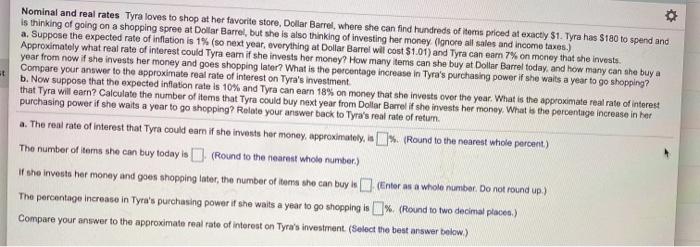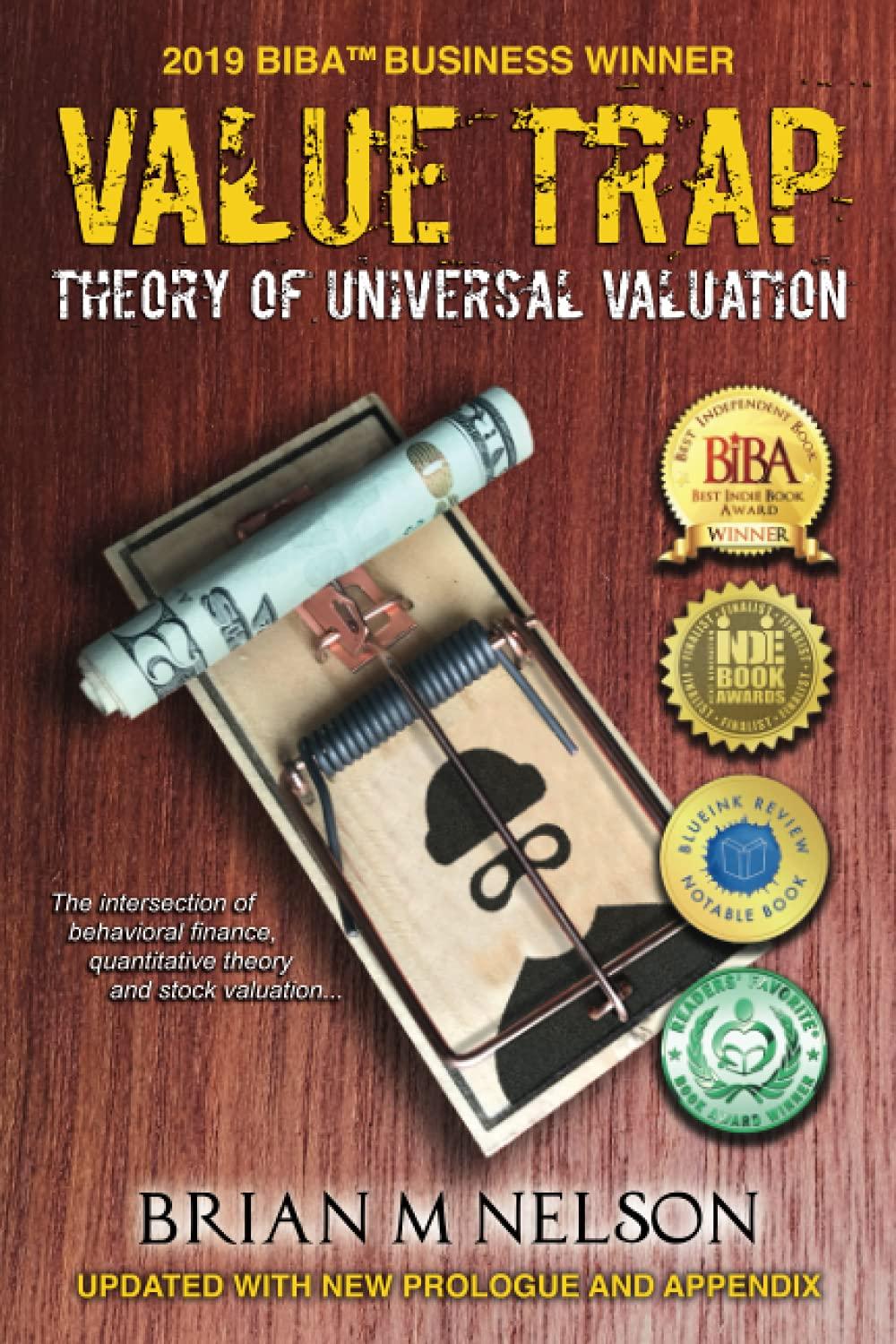i posted couple of pic just to make sure its clear enough to read

5t Nominal and real rates Tyra loves to shop at her favorite store, Dollar Barrel, where she can find hundreds of items priced at exactly $1. Tyra has $180 to spend and Is thinking of going on a shopping spree at Dollar Barrel, but she is also thinking of investing her money (ignore all sales and income taxes.) a. Suppose the expected rate of inflation is 1% (so next year, everything at Dollar Barrel will cost $1.01) and Tyra can earn 7% on money that she invests. Approximately what real rate of interest could Tyra eam if she invests her money? How many items can she buy at Dollar Barrel today, and how many can she buy a year from now if she invests her money and goes shopping later? What is the percentage increase in Tyra's purchasing power if she waits a year to go shopping? Compare your answer to the approximate real rate of interest on Tyra's investment b. Now suppose that the expected inflation rate is 10% and Tyra can earn 18% on money that she invests over the year. What is the approximate real rate of interest that Tyra will earn? Calculate the number of items that Tyre could buy next year from Dollar Barrel if she invests her money. What is the percentage increase in her purchasing power if she waits a year to go shopping? Relate your answer back to Tyra's real rate of return a. The real rate of interest that Tyra could earn if she invests her money, approximately, in % (Round to the nearest whole porcent.) The number of items she can buy today is (Round to the nearest whole number.) If she invests her money and goes shopping later, the number of toma she can buy is (Enter as a whole number. Do not round up) The percentage increase in Tyra's purchasing power if she wals a year to go shopping is % (Round to two decimal place) Compare your answer to the approximate real rate of interest on Tyra's investment (Select the best answer below) rate of return berage in Compare your answer to the approximate real rate of interest on Tyra's investment. (Select the best answer below) O A. The real rate of interest is exactly equal to the difference between the nominal rato and the expected inflation rate. B. The real rate of interest is approximately equal to the nominal rate plus the expected inflation rate. C. The real rate of interest is approximately equal to the difference between the nominal rate and the expected inflation rate. OD. The real rate of interest is approximately equal to the nominal rate multiplied by the expected inflation rate. b. The real rate of interest that Tyra could earn if she invests her money, approximately, is %. (Round to the nearest whole percent.) If she invests her money and goes shopping later, the number of items she can buy is (Enter as a whole number. Do not round up.) The percentage increase in Tyra's purchasing power if she waits a year to go shopping is % (Round to two decimal places.) I Relate your answer back to Tyra's real rate of return. (Select the best answer below.) O A. The real rate of interest is approximately equal to the nominal rate plus the expected inflation rate. This approximation is quite good when the interest rates Click to select your answer(s). Relate your answer back to Tyra's real rate of retum. (Select the best answer below.) OA The real rate of interest is approximately equal to the nominal rate plus the expected inflation rate. This approximation is quite good when the interest rates and expected inflation tra low However, in market arronments with high interest and nation rates, the appformation becomes less accurate OB. The rool rate of interest is approximately equal to the difference between the nominal rate and the expected inflation rate This apronation is not when the interest rates and expected Intation are low. However, in market environments with righ interest and nation rates, the approximation becomes more accurate OG The real le of interest is approximately equal to the nominate the expected inflation on this approximation is quite good when the rest rates and expected infotion are high. However, in mare envronments with low interest and ination rates the approximation becomes accurate OD The rotate of interest is my qual to the forence between the nominal rate and the expected to rate. This aproximation is uite good when there is and expected nation low. However, in market environments with high interest and inflation, the approximation become one cu Relate your answer back to Tyra's real rate of retum. (Select the best answer below.) O A. The real rate of interest is approximately equal to the nominal rate plus the expected inflation rate. This approximation is quite good when the interest rates and expected inflation are low. However, in market environments with high Interest and inflation rates, the approximation becomes less accurate, OB. The real rate of interest is approximately equal to the difference between the nominal rate and the expected Inflation rate. This approximation is less accurate when the interest rates and expected inflation are low. However, in market environments with high interest and inflation rates, the approximation becomes more accurate The real rate of infort OB. The real rate of interest is approximately equal to the difference between the nominal rate and the expected Inflation rate. This approximation is less accurate when the interest rates and expected Inflation are low. However, in market environments with high interest and inflation rates, the approximation becomes more accurate. OC. The real rate of interest is approximately equal to the nominal rate plus the expected inflation rate. This approximation is quite good when the interest rates and expected inflation are high. However, in market environments with low interest and inflation rates, the approximation becomes less accurate, OD. The real rate of interest is approximately equal to the difference between the nominal rate and the expected inflation rate. This approximation is quite good when the interest rates and expected inflation are low. However, in market environments with high interest and inflation rates, the approximation becomes less accurate













